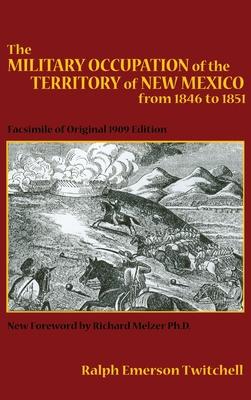The author, in his introduction to the 1909 edition of this book, referring to the war with Mexico in the New Mexico Territory, says: "Here is presented to the student a wonderful field of historic research. The American Occupation period has been chosen as the one most easily described, and, at the same time, one of the most interesting in the history of the American people, containing, as it does, the deeds of men who won the West, men whose courage, devotion to country and true citizenship enabled them to accomplish the greatest military achievement of modern times, a single regiment of citizen soldiers, marching nearly six thousand miles through five states of a foreign nation, living off the resources of the invaded country, almost annihilating a powerful army, conquering and treating with powerful Indian tribes, and, returning home, graced with the trophies of victory, all with the loss of less than a hundred men." The author hoped that the book, with its many illustrations, would instill "lessons of patriotism, honor, valor and love of country."

The Military Occupation of the Territory of New Mexico from 1846 to 1851: Facsimile of Original 1909 Edition
The author, in his introduction to the 1909 edition of this book, referring to the war with Mexico in the New Mexico Territory, says: "Here is presented to the student a wonderful field of historic research. The American Occupation period has been chosen as the one most easily described, and, at the same time, one of the most interesting in the history of the American people, containing, as it does, the deeds of men who won the West, men whose courage, devotion to country and true citizenship enabled them to accomplish the greatest military achievement of modern times, a single regiment of citizen soldiers, marching nearly six thousand miles through five states of a foreign nation, living off the resources of the invaded country, almost annihilating a powerful army, conquering and treating with powerful Indian tribes, and, returning home, graced with the trophies of victory, all with the loss of less than a hundred men." The author hoped that the book, with its many illustrations, would instill "lessons of patriotism, honor, valor and love of country."